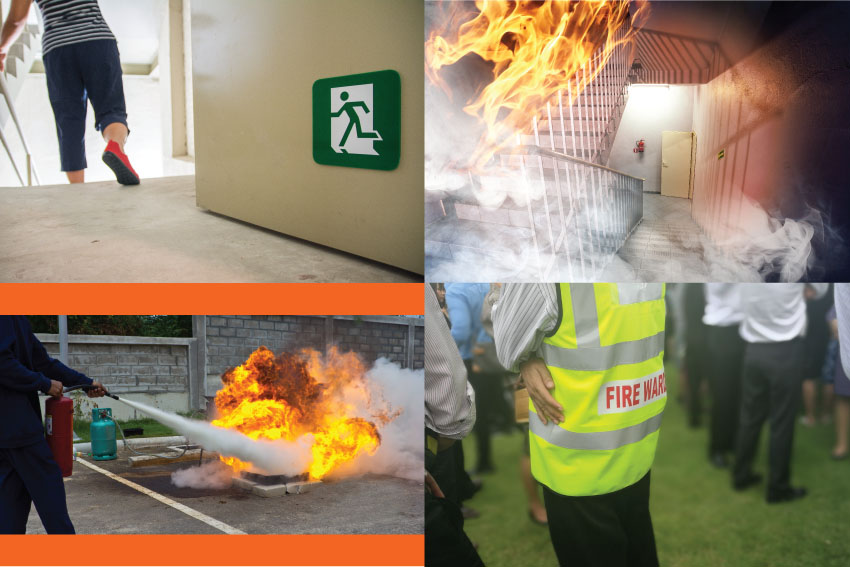
You may instinctively feel that the heroic thing to do in the event of a fire is to try to put it out. However, there are certain situations in which fighting a fire could worsen the situation.
In this blog, we’ll go over the different factors you should consider (quickly!) when deciding whether it’s a good idea to fight a fire.
When Not to Fight a Fire
Improper Knowledge
If you’re not ready with the correct knowledge and/or equipment, trying to fight a fire could simply end up in injury. Excessive smoke inhalation, burns, and other hazards could put you further in harm’s way.
If you do choose to fight a fire, you should always make sure that you’re using the right fire extinguisher. Different types of fire extinguishers should be used for different types of fires. Using the incorrect one could actually make the fire worse, with some combinations even being susceptible to explosions.
What’s more, if you aren’t a trained professional, you may think the fire’s been entirely extinguished when it hasn’t. This could result in reignition and further spread of fire damage.
Additional Danger
If fighting a fire is going to put you in more direct danger, leave it to the professionals. For example, if the structural integrity of a building is at risk due to fire damage, avoid running back inside – however heroic it may seem to do so. As well as physical danger, exposing yourself to a risk like this makes you susceptible to long-term psychological damage.
Emergency Response
Putting out a fire can sometimes delay the response of the emergency services. Trained firefighters will always respond to the most demanding call out first. Attempting to put it out yourself suggests that the fire is under control, so professionals may take longer to arrive.
When Is It Okay to Fight a Fire?
If Everyone has Evacuated
Evacuating the building should always be the first step in response to a discovered fire. Everyone should leave the building via fire escape routes, which should be clearly marked around the site by fire exit signs.
After everyone has safely left the building and emergency services have been called, those with appropriate fire safety training may attempt to put out the fire provided it is safe to do so.
A Small, Contained Fire
If the fire is still in its initial stage and has not yet spread, you should attempt to put it out with a fire extinguisher. Make sure you’re using the right equipment – either the right type of extinguisher or a fire blanket, depending on the type of fire you’re dealing with. Acting fast can prevent the spread of a fire and minimise the damage it causes.
An Escape Route is Still Available
You should only ever attempt to put out a fire if there is still a fire escape route available to you. Fire is unruly and unpredictable; if the fire is growing, you may find suddenly that it’s blocked off your escape route. As soon as the fire begins to creep closer to your exit, you should leave the area.
You’ve Been Trained in Fire Safety
All of the above points only apply if you’ve been trained in fire safety to begin with. If you do not feel confident, comfortable, or safe in basic firefighting techniques then it’s best not to engage.
For the safety of yourself and others, it’s best to only attempt to put out a fire if you’ve had the correct training and know exactly what you’re doing.
Stay Safe with Label Source
Having the correct fire safety signage around your office or work site is vital for the safety of your employees and customers. Correctly marking your fire exits and the locations of your fire safety equipment is a necessity for a safe work environment.
For more information about how Label Source can help you, get in touch today or stay up to date with the latest health and safety news on our blog.